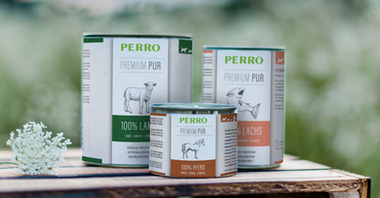Protect cats from ticks naturally
Ticks transmit a variety of dangerous diseases. Effective tick protection is therefore essential for cats that are allowed outdoors. Find out here what you need to look out for and which natural products are effective.
Good to know - tick protection for cats is important
Ticks can transmit numerous unpleasant and dangerous diseases to their host. To prevent this, it is highly advisable to protect your cat from the bloodsuckers as a preventative measure. In other words, make sure that the tick does not get on the cat in the first place.
Ticks are among the largest of the mites and therefore belong to the group of arachnids. The most common tick species in Central Europe are the common wood tick and the brown tick. They have a sophisticated system for attaching themselves to their host. They lurk in meadows, undergrowth and trees, usually 10 - 50 cm above the ground, and allow themselves to be wiped off their victims. When biting, the tick introduces proteins into the wound via its saliva, which inhibit blood clotting and conveniently also anaesthetise the area locally. This means that neither humans nor animals have a defence reaction and the tick can suck undisturbed.
The right tick repellent for cats
Important to know: Not all active ingredients that are used on dogs are suitable for cats. Extreme caution is required here, as treatment with the wrong product can have negative consequences for cats, including death. This is because cats lack an enzyme necessary for metabolisation.
However, there are enough active ingredients that can also be used safely for cats. And it doesn't always have to be a synthetically produced preparation. Nature has a whole range of effective active ingredients that deter ticks.
Natural anti-tick products for cats
Outdoor cats in particular need preventative protection during the tick season. There are many different products on the market that have a natural protective effect. One of the most popular products are so-called spot-ons against ticks. These are applied in such a way that the cat cannot lick them off - ideally between the shoulder blades or on the cat's neck . Depending on the active ingredient, such an application lasts for about a month. For good protection, the treatment should be repeated within the period specified by the manufacturer.
Tick repellent collars for cats are also very popular. These release the repellent via the sebaceous glands of the skin and thus work over a certain period of time.
Another popular anti-tick product are chips for the cat collar, which have a protective effect for many months . It is important to note that the cat's collar should be self-releasing in an emergency. This means that there is a risk that the chip will come off with the collar and thus no longer have a protective effect.
Sprays against ticks without alcohol and with active ingredients suitable for cats are also effective, care for skin and fur, but must be renewed at short intervals. Environmental sprays also help to keep places such as the cat's sleeping areas free of parasites.
Remove ticks correctly
If the tick has already bitten, there are a few things to consider when removing it:
Useful tips for removing ticks:
- Use tick tweezers or tick hooks: It is advisable to use tick tweezers or a tick hook so that the tick can be grasped easily and safely. If it is removed with your fingers, there is a risk of the tick being squeezed and pathogens being pressed into the bite site.
- Evenly and slowly: Hold the tick as close as possible to the skin with the pliers and then pull it out slowly and evenly. Do not make any jerky pulling or twisting movements, as this can tear the tick in two and leave it stuck in the animal.
- Important: Perform the removal as stress-free as possible , because stressed ticks secrete body secretions that transmit pathogens. Therefore, methods using oil, alcohol, glue, etc. are not suitable. This is because the secretions are literally pumped into the host during the death throes.










































